Abstract
OBJECTIVES: To explore the way ethical principles develop during a medical education course for three groups of medical students--in their first year, at the beginning of their penultimate (fifth) year and towards the end of their final (sixth) year. DESIGN: Survey questionnaire administered to medical students in their first, fifth and final (sixth) year. SETTING: A large medical school in Queensland, Australia. SURVEY SAMPLE: Approximately half the students in each of three years (first, fifth and sixth) provided data on a voluntary basis, a total of 385 students. RESULTS: At the point of entry, minor differences were found between medical students and first year law and psychology students. More striking were differences between male and female medical students, suggesting early socialization had a substantial impact here. CONCLUSIONS: Results indicate that substantial changes in attitude have developed by the beginning of fifth year with little change thereafter. Gender difference persisted. Some difference in ethical attitudes were found when groups of different ethnic backgrounds were compared. The impact of a move to a graduate medical course, which gives high priority to ethics within a professional development domain, can now be evaluated.
Full text
PDF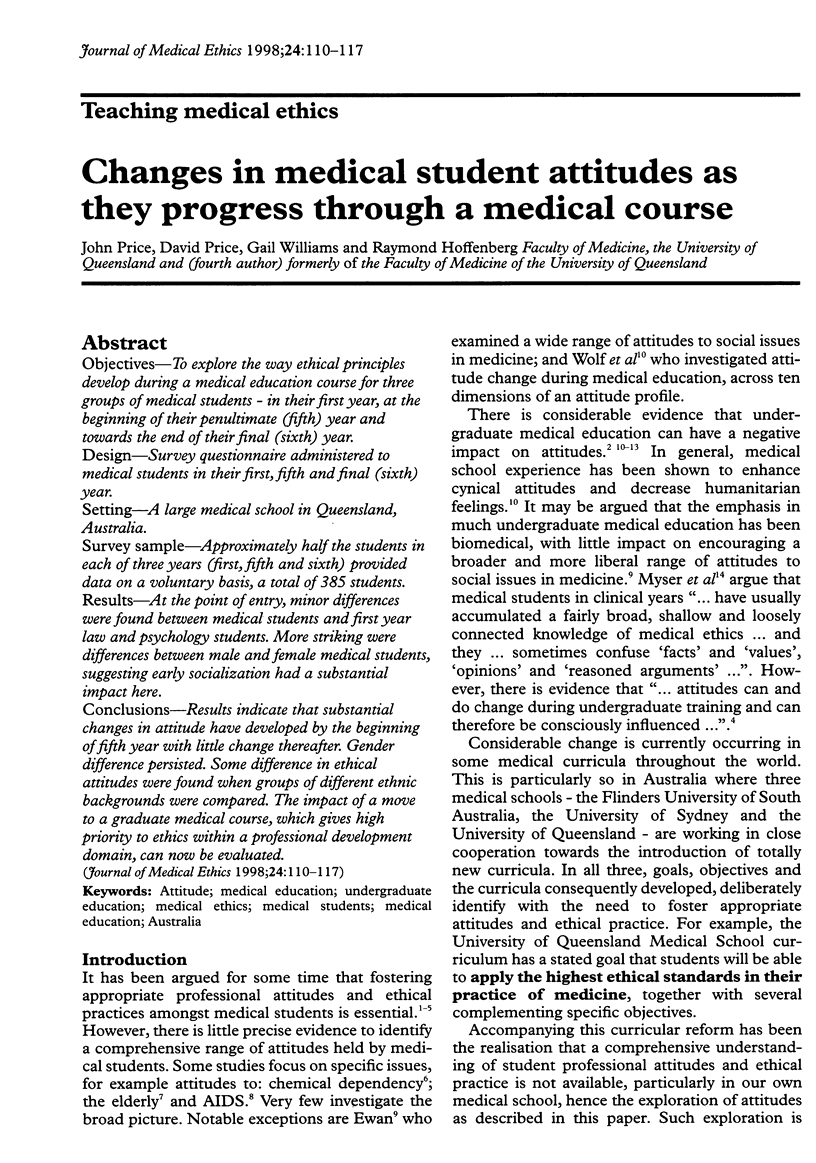
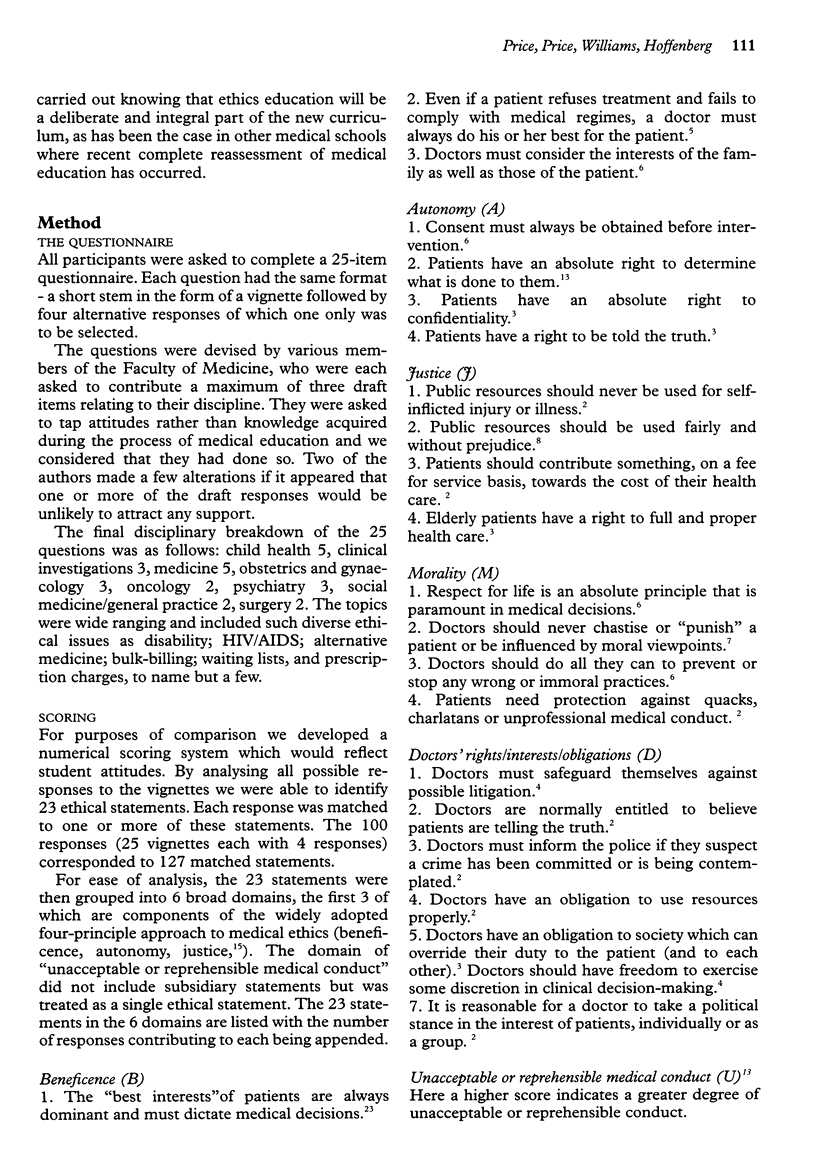
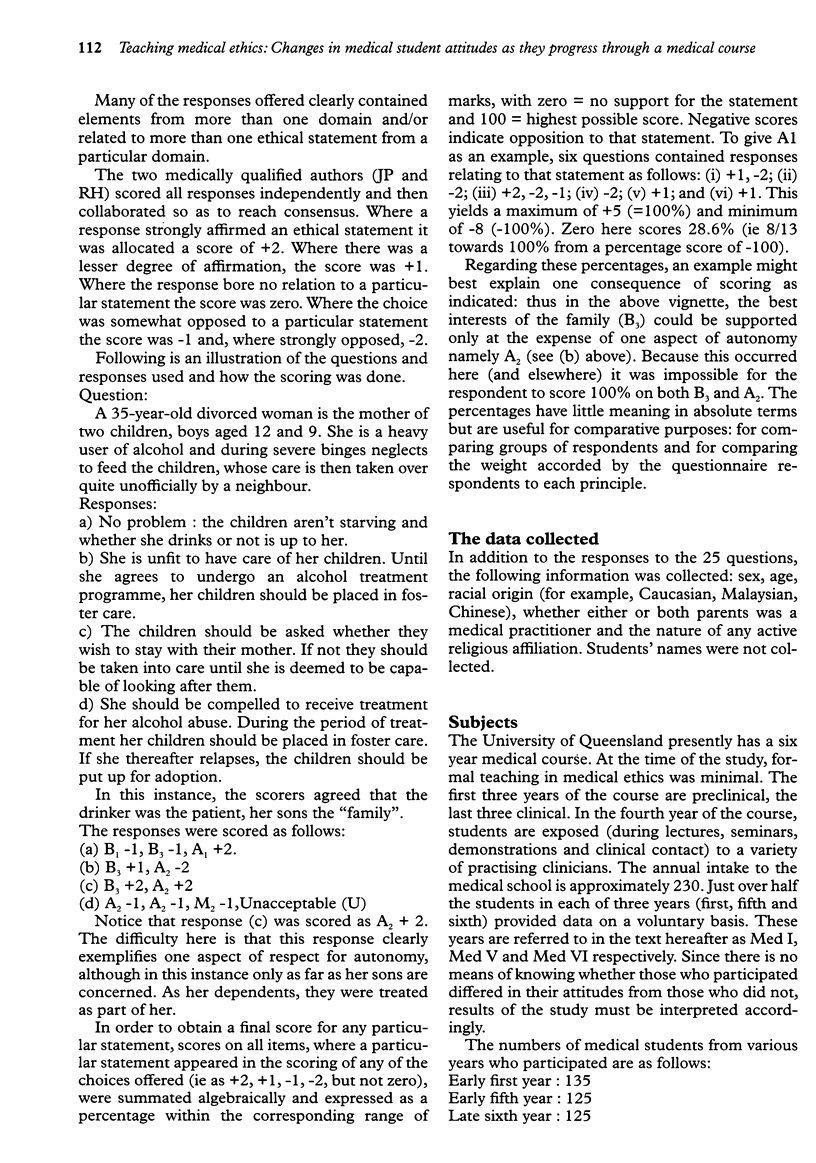
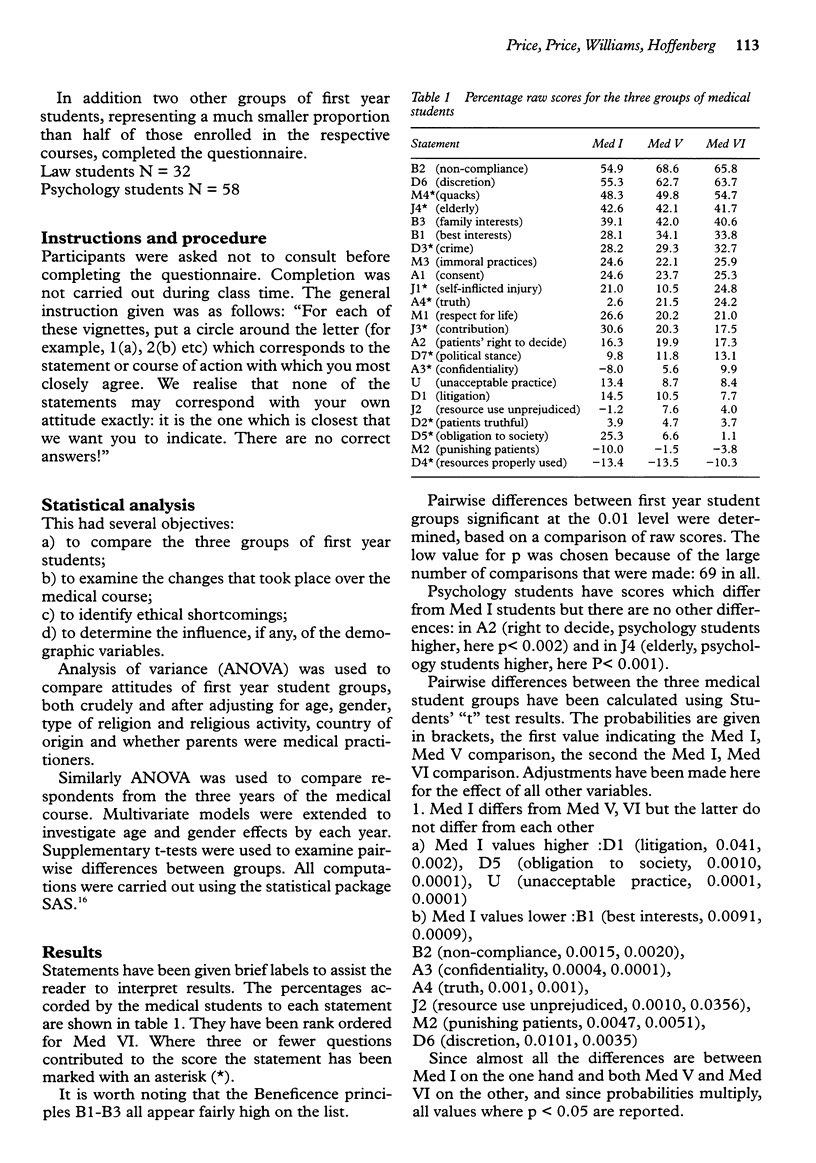
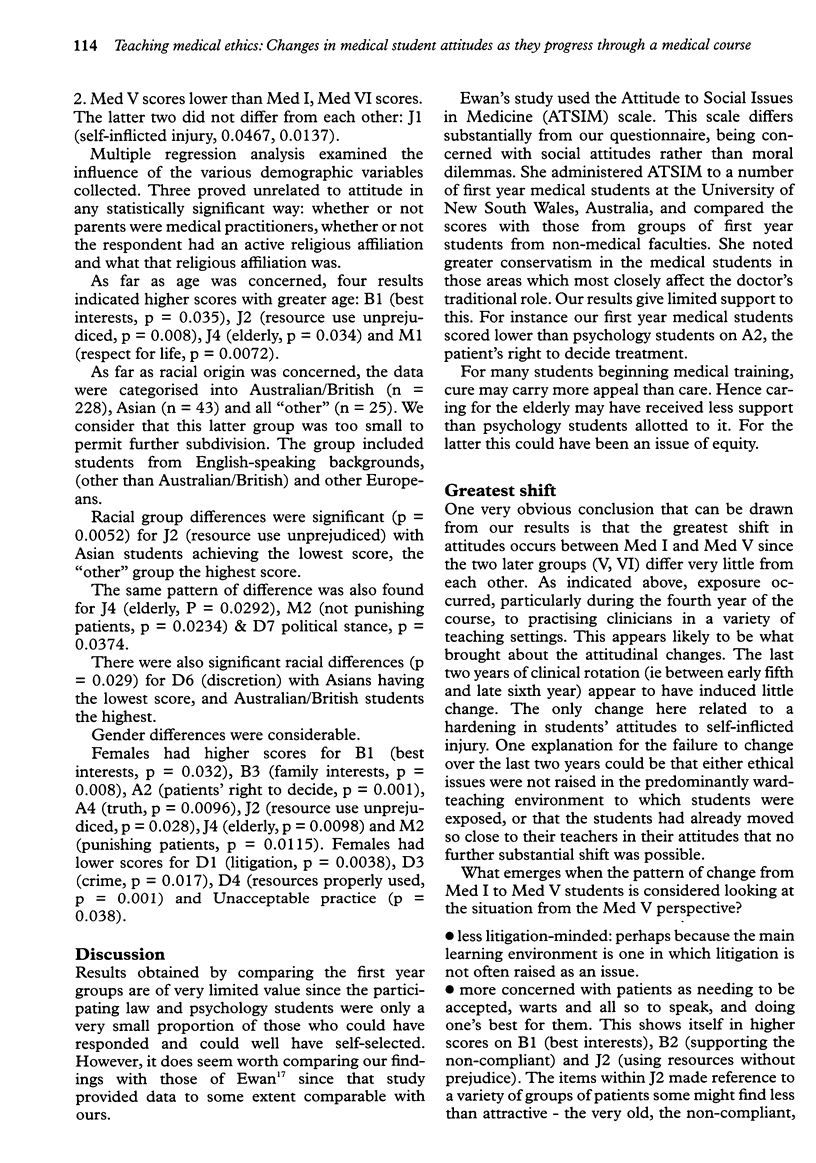
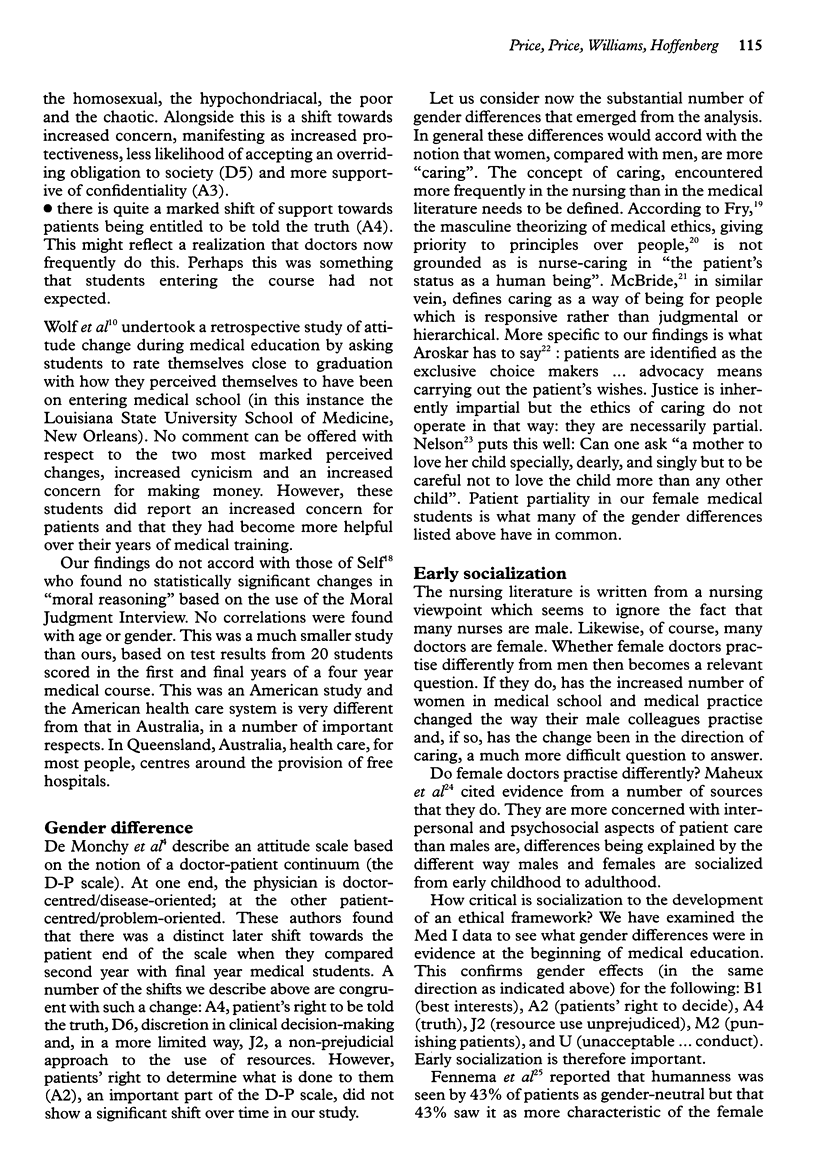
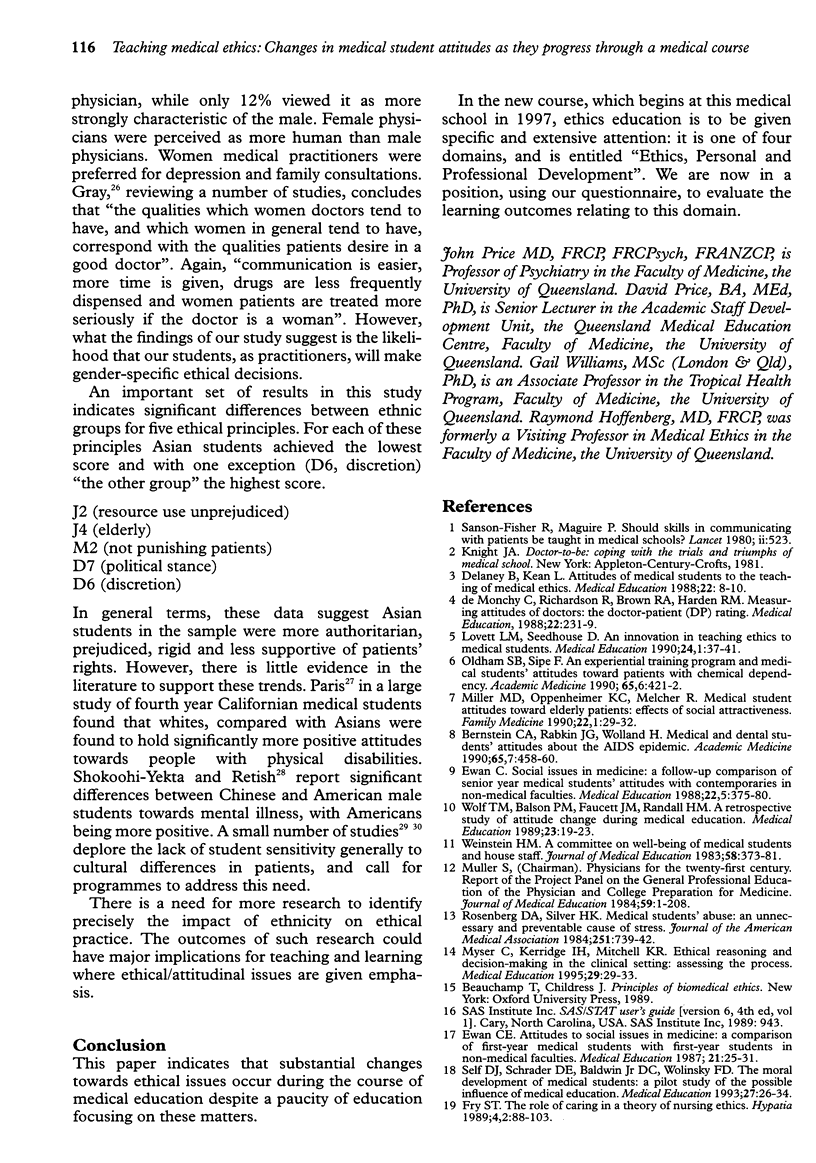
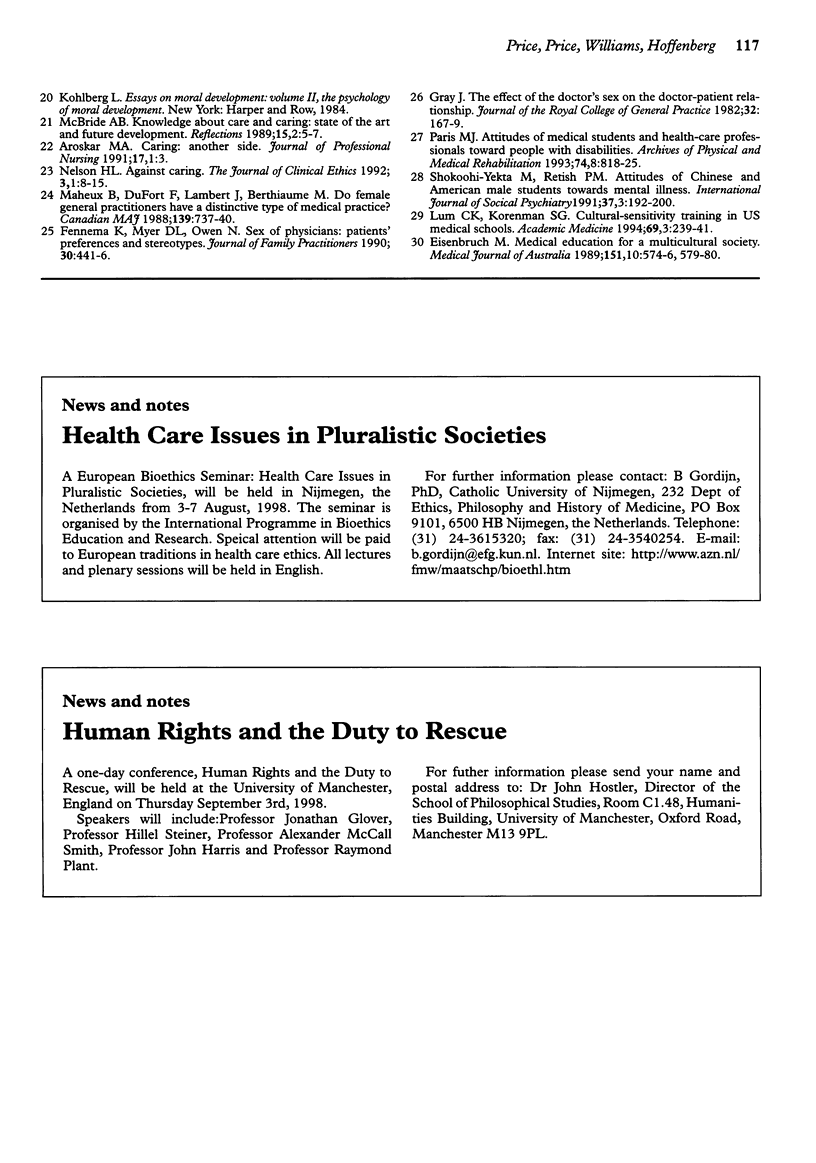
Selected References
These references are in PubMed. This may not be the complete list of references from this article.
- Bernstein C. A., Rabkin J. G., Wolland H. Medical and dental students' attitudes about the AIDS epidemic. Acad Med. 1990 Jul;65(7):458–460. doi: 10.1097/00001888-199007000-00010. [DOI] [PubMed] [Google Scholar]
- Delaney B., Kean L. Attitudes of medical students to the teaching of medical ethics. Med Educ. 1988 Jan;22(1):8–10. doi: 10.1111/j.1365-2923.1988.tb00401.x. [DOI] [PubMed] [Google Scholar]
- Eisenbruch M. Medical education for a multicultural society. Med J Aust. 1989 Nov 20;151(10):574-6, 579-80. [PubMed] [Google Scholar]
- Ewan C. E. Attitudes to social issues in medicine: a comparison of first-year medical students with first-year students in non-medical faculties. Med Educ. 1987 Jan;21(1):25–31. doi: 10.1111/j.1365-2923.1987.tb00510.x. [DOI] [PubMed] [Google Scholar]
- Ewan C. Social issues in medicine: a follow-up comparison of senior-year medical students' attitudes with contemporaries in non-medical faculties. Med Educ. 1988 Sep;22(5):375–380. doi: 10.1111/j.1365-2923.1988.tb00770.x. [DOI] [PubMed] [Google Scholar]
- Fennema K., Meyer D. L., Owen N. Sex of physician: patients' preferences and stereotypes. J Fam Pract. 1990 Apr;30(4):441–446. [PubMed] [Google Scholar]
- Fry Sara T. The role of caring in a theory of nursing ethics. Hypatia. 1989 Summer;4(2):88–103. [PubMed] [Google Scholar]
- Gray J. The effect of the doctor's sex on the doctor-patient relationship. J R Coll Gen Pract. 1982 Mar;32(236):167–169. [PMC free article] [PubMed] [Google Scholar]
- Lovett L. M., Seedhouse D. An innovation in teaching ethics to medical students. Med Educ. 1990 Jan;24(1):37–41. doi: 10.1111/j.1365-2923.1990.tb02435.x. [DOI] [PubMed] [Google Scholar]
- Lum C. K., Korenman S. G. Cultural-sensitivity training in U.S. medical schools. Acad Med. 1994 Mar;69(3):239–241. doi: 10.1097/00001888-199403000-00021. [DOI] [PubMed] [Google Scholar]
- Maheux B., Dufort F., Lambert J., Berthiaume M. Do female general practitioners have a distinctive type of medical practice? CMAJ. 1988 Oct 15;139(8):737–740. [PMC free article] [PubMed] [Google Scholar]
- Miller M. D., Oppenheimer K. C., Melcher R. Medical student attitudes toward elderly patients: effects of social attractiveness. Fam Med. 1990 Jan-Feb;22(1):29–32. [PubMed] [Google Scholar]
- Myser C., Kerridge I. H., Mitchell K. R. Ethical reasoning and decision-making in the clinical setting: assessing the process. Med Educ. 1995 Jan;29(1):29–33. doi: 10.1111/j.1365-2923.1995.tb02796.x. [DOI] [PubMed] [Google Scholar]
- Oldham S. B., Sipe F. An experiential training program and medical students' attitudes toward patients with chemical dependency. Acad Med. 1990 Jun;65(6):421–422. doi: 10.1097/00001888-199006000-00022. [DOI] [PubMed] [Google Scholar]
- Paris M. J. Attitudes of medical students and health-care professionals toward people with disabilities. Arch Phys Med Rehabil. 1993 Aug;74(8):818–825. doi: 10.1016/0003-9993(93)90007-w. [DOI] [PubMed] [Google Scholar]
- Rosenberg D. A., Silver H. K. Medical student abuse. An unnecessary and preventable cause of stress. JAMA. 1984 Feb 10;251(6):739–742. doi: 10.1001/jama.251.6.739. [DOI] [PubMed] [Google Scholar]
- Sanson-Fisher R., Maguire P. Should skills in communicating with patients be taught in medical schools? Lancet. 1980 Sep 6;2(8193):523–526. doi: 10.1016/s0140-6736(80)91844-9. [DOI] [PubMed] [Google Scholar]
- Self D. J., Schrader D. E., Baldwin D. C., Jr, Wolinsky F. D. The moral development of medical students: a pilot study of the possible influence of medical education. Med Educ. 1993 Jan;27(1):26–34. doi: 10.1111/j.1365-2923.1993.tb00225.x. [DOI] [PubMed] [Google Scholar]
- Weinstein H. M. A committee on well-being of medical students and house staff. J Med Educ. 1983 May;58(5):373–381. doi: 10.1097/00001888-198305000-00002. [DOI] [PubMed] [Google Scholar]
- Wolf T. M., Balson P. M., Faucett J. M., Randall H. M. A retrospective study of attitude change during medical education. Med Educ. 1989 Jan;23(1):19–23. doi: 10.1111/j.1365-2923.1989.tb00807.x. [DOI] [PubMed] [Google Scholar]
- de Monchy C., Richardson R., Brown R. A., Harden R. M. Measuring attitudes of doctors: the doctor-patient (DP) rating. Med Educ. 1988 May;22(3):231–239. doi: 10.1111/j.1365-2923.1988.tb00012.x. [DOI] [PubMed] [Google Scholar]


